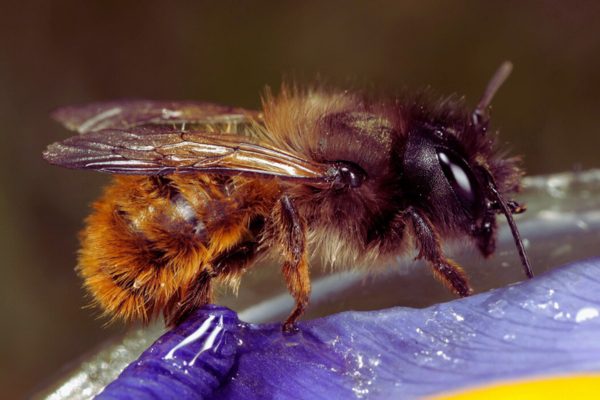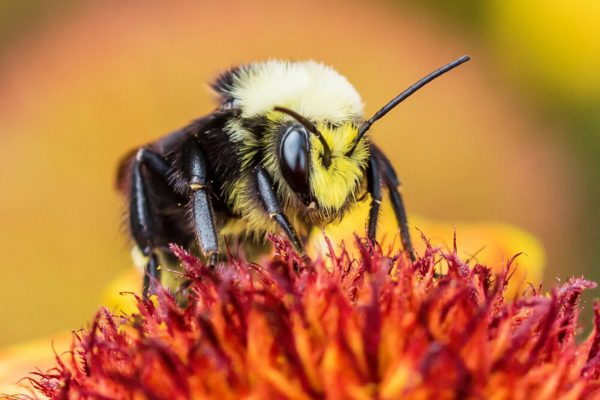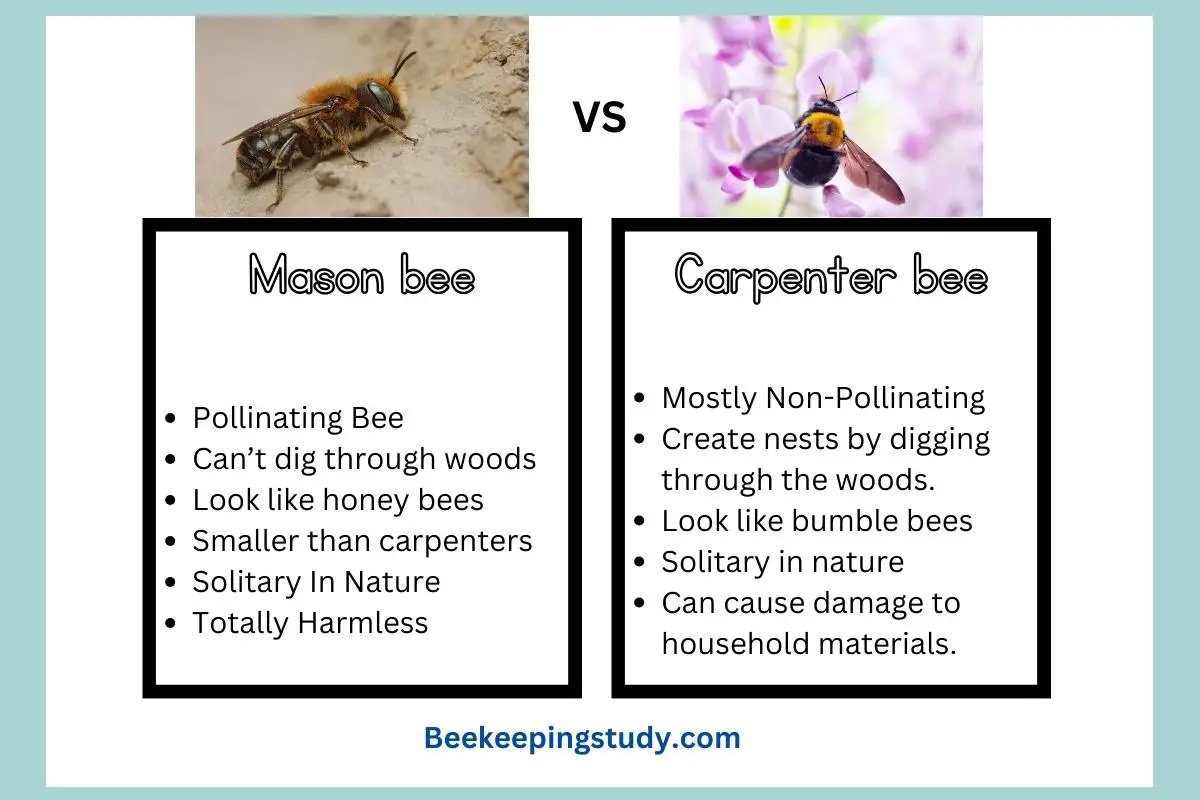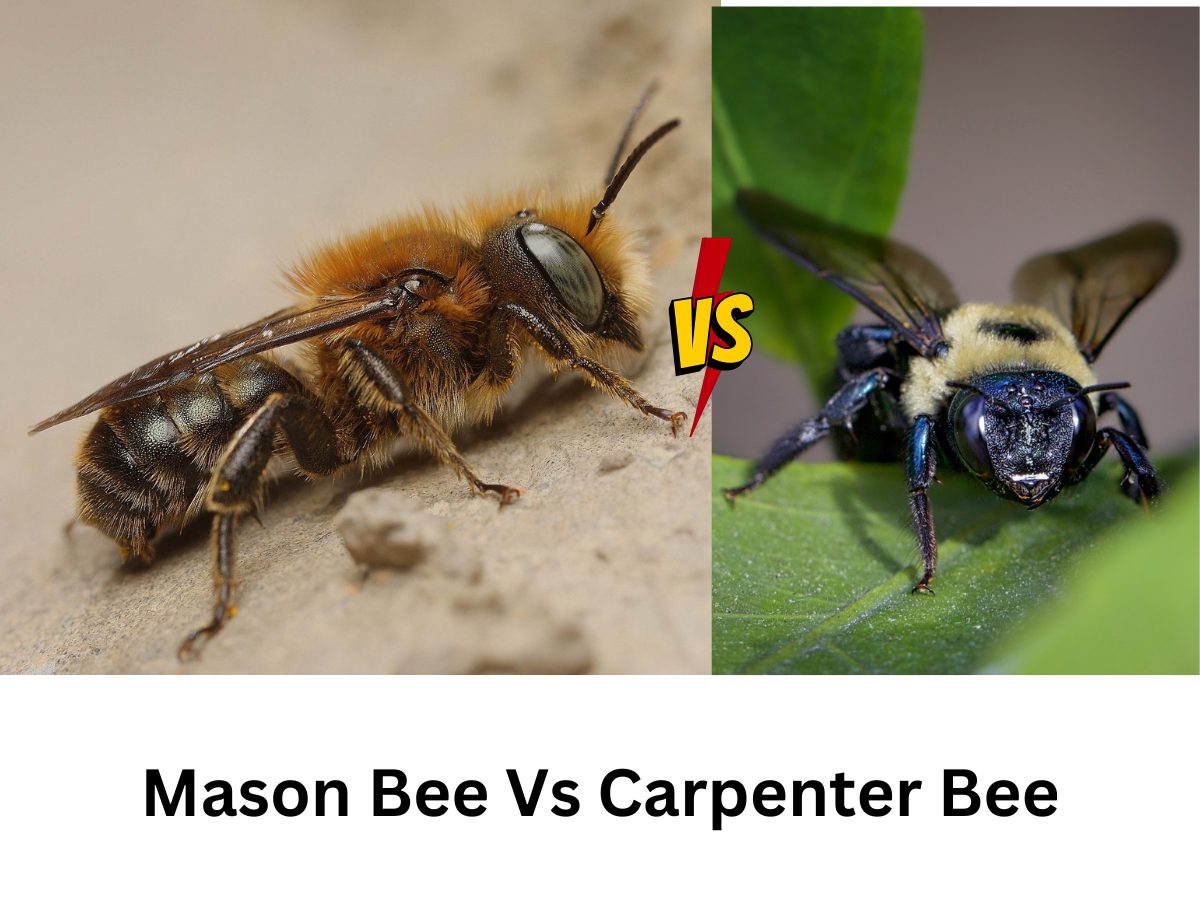I love to keep different types of bees in my yards and garden. Besides honey bees, I like bumble bees and mason bees too. In the case of carpenter bees actually, I don’t like them much.
There is confusion among people about whether carpenter bees or mason bees are harmful. Also, people are confused about identifying them. This is why this blog post mason bee vs carpenter bee is specifically for the comparison between these 2 types of bees.
At an early age, I was only familiar with honey bees and yellow jackets. I wasn’t familiar with other bees. But one day I found a hole in my reading table which is made of wooden material. I noticed a bee coming out from that hole.
I was surprised how honey bees can dig through wood. I even don’t have any idea do bees really eat wood. Then my father told me that bee is not a honey bee.
That was either mason bee or carpenter bee. So, I started searching on the internet about different types of bees. Also, talked with local beekeepers in my region. Then I got familiar with different types of bees.
Also, I learned a lot about mason bees and carpenter bees. Finally, I reached a conclusion about a comparative study between mason bee vs carpenter bee. That’s what I am going to discuss in this post.
So the main purposes of this blog post are the following.
- Important information about mason bees.
- Important information about carpenter bees.
- A comparison of mason bee vs carpenter bee.
What Are Mason Bees?
Mason bees are a special type of bees that are solitary in nature. They are of the Megachilidae family and Osmia genus. They are called mason bees because of their habit of using masonry products while creating their nest.
Mason bees don’t live in a colony. The female mason bees individually create their nests. Then the female lays eggs in their nest.
When the brood bees become adults they leave the nest. Then they start building their own nest.
Usually, female mason bees create their nest. The male mason bees live outside the nest. They try to attract female mason bees. After mating with female mason bees the male dies. This is the only purpose of male mason bees.

Do Mason Bee Pollinates?
Of course. Mason bee even pollinates more than honey bee does. Mason bee collects pollen from the flower and holds it in their lower body. As they don’t have any pollen basket while traveling from flower to flower pollen from their lower body falls to other flowers. This way they pollinate more efficiently than honey bees.
Because of this, I love to attract mason bees in my garden. You know there are a lot of different types of ground bees that are pollinators. Mason bees are the most significant among them.
Do Mason Bees Damage Homes?
No, mason bees can’t damage homes. Because they usually do not create their own nest by digging holes. They use existing holes created by other insects or predators.
Mason bees can live in plenty of places around your house. Following are the places where mason bees can live.
- In the holes of a wood created by wood-pecking insects or carpenter bees.
- In the hole of bamboo.
- Inside the small hole in a rock created by someone else.
- Small holes in trees.
- In the cavity in a wall.
- Sometimes they also nest in the ground cavity.
Besides these, they can live in any suitable holes created by other predators. Even they can live in the holes of your household furniture.
But they are unable to damage your household as they don’t peck holes. They also have comparatively weaker mandibles than carpenter bees.
Are Mason Bees Harmless?
Mason bees are totally harmless. They are solitary in nature. The males don’t have any sting whereas the females are not defensive at all. This is why they are totally harmless around humans.
As mason bees don’t live in a colony like honey bees. They don’t have any queen bees or worker bees, so they are not defensive at all.
Should I Remove Mason Bees?
Mason bees are not aggressive and they are safe around humans. So, you don’t need to harm them. Just leave them alone they will bless your garden.
As I already told you they don’t create their own nest. They live in the hole created by other predators. Also, they don’t peck holes. So, they are harmless for your household materials.
In fact, they are not even aggressive. So, why do you even think of removing this blessed creature?
If you still need more information about mason bees you might check this one.
What Are Carpenter Bees?
Carpenter bees are the type of ground bees that usually live in wooden material by creating holes in it. They also commonly create their nest in bamboo and other plants.
At the beginning of the post, I told you I saw a bee coming from the hole in my reading table. I found that the culprit was a carpenter bee, not a mason bee.
Because mason bees can’t chew through wood. Whereas carpenter bees can chew through wood to create their nest.
The hole is created by this carpenter bee. Not only this, I found several holes in different household wooden materials.
They also attract woodpeckers to our house. Then my father called a pest control unit. They take the necessary steps and remove all the carpenter bees from our house.
They suggested my father use a carpenter bee trap to catch them. Also, they give us some other suggestions to get rid of carpenter bees in the future. We followed their instructions and now we are free from these bees.

Do Carpenter Bees Sting
Male carpenters don’t have any kind of sting. But the female carpenters have stings. But they are unlikely to use their sting as they are not so defensive.
Like mason bees, carpenter bees are also solitary in nature. Female carpenter bees create their nest by digging through wooden materials. They lay eggs and raise their broods inside the hole.
They use sawdust to separate different chambers inside the hole. A carpenter can dig up to 10 inches deep holes.
The females are only focused on developing their broods. So, she is not defensive about her nest. This is why she won’t use her sting unless you try to harm her or squeeze her.
Then Why Are Carpenter Bees So Aggressive?
If you figure out aggressive carpenter bees they are the male carpenters who don’t have sting. They just show aggressive behavior to drive fear. Also, they show more aggressiveness to other insects in front of females to attract her.
Otherwise, carpenter bees are not aggressive. You will only get stung by carpenter bees while you try to hold a female carpenter in your hands.
Are Carpenter Bees Pollinators?
Carpenter bees are not likely to contribute much to pollination as mason bees do. Because most of them eat nectar from the flower’s bottom parts. But still, there are some carpenter bees that contribute to pollination.
Like mason bees, they also don’t have any pollen baskets. The female carpenter can pollinate flowers while coming to her nest with pollen in her lower legs. She collects pollen for her broods.
In this way, female carpenters can contribute to pollination. But most of the carpenter bees collect nectar from the bottom part of the plants. They also eat other things like tree sap, fruit juice, etc. These types of carpenters do not contribute to pollination.
Should You Get Rid Of Carpenter Bees?
If the carpenter bees are in your yards or garden then you shouldn’t get rid of them. But if they create nests in your household materials then you should get rid of them. As they can damage the wooden materials.
My family members do not like carpenter bees at all. But they like mason bees and other bees that I keep in our yards and garden.
Carpenter bees can also damage drywall. So, if they are causing any damage to your household then try to remove them. You can either try this on your own. Or call for a pest control expert. They will help you to get rid of them.
You can also check my post where I discussed 8 ways to get rid of ground bees. This might be helpful for you to get rid of carpenter bees too.
Comparison Of Mason Bee Vs Carpenter Bee
So far I have discussed with you about mason bees and carpenter bees. So, you may already have a basic idea about the differences between mason bees and carpenter bees.

I would like to share with you a comparison of mason bee vs carpenter bee precisely. This will include both similarities and dissimilarities between these 2 different types of bees.
| Characteristics | Mason Bee | Carpenter Bee |
| 1) Look | Light-colored hair on its face, fuzzy abdomen, and almost look like a honey bee. | They have a clear marking on their abdomen, and they almost look like bumble bees. |
| 2) Color | They are usually black, blue, and green colored. | Mostly black body with a yellow abdomen. |
| 3) Size | Males are smaller than females. Usually 1/4 inch to a maximum of 3/4 inch in length. | Larger than Mason bees. Usually, 1/2 inch to 1 inch in length. |
| 4) Nesting Habit | They don’t create their own nest. Lives in the hole created by other insects. | Carpenter bees create their own nest on wooden material or in trees. |
| 5) Nest Size | Different sizes as they don’t create their own nest. Usually 1/4 to 3/4 inches in diameter and 4 to 6 inches deep. | Round shape hole having around 1/2 inches in diameter and 5 to 10 inches deep. |
| 6) Pollinating habit | All mason bees are pollinators. | Most of the carpenter bees do not contribute to pollination. But some of them can do. |
| 7) Chewing | Mason bees can’t chew through wood or other household materials. | Carpenter bees can chew through wood and other household materials. |
| 8) Nature | They are not aggressive at all. | Less aggressive. Male bees may show aggressiveness but they can’t sting. |
Remember mason bee is totally harmless for you. Instead, they are very much beneficial for your garden. Whereas sometimes carpenter bees can become a matter of annoyance for you. Because they can damage your household.
This characteristic will make the Mason bee a winner between Mason bee vs Carpenter bee in terms of impact on human life.
Frequently Asked Questions About Mason Bee And Carpenter Bee
Do mason bees give honey?
Though the mason bee looks like a honey bee, it can not produce any honey. They collect pollen and nectar from flowers to feed their broods. But they do not store any honey for the future. Because they don't live in a colony. So, they don't have to store food to feed a large number of members.
Are mason bees good to have around?
Mason bees are pollinating insects. They will increase the beauty of your garden by increasing different types of flowers in your garden.
They are also harmless and not aggressive at all. This is why mason bees are very good to have around.
Do Mason Bees Nest In Wood?
Yes, mason bees can nest in wood if there is an existing hole. But they won't dig holes in wood to create their nest. Because mason bees can't chew through wood.
They will nest in wood only if there is an existing hole created by another insect like a carpenter bee or woodpeckers.
What attracts carpenter bees to my house?
There are a lot of different things that can attract carpenter bees to your house. These include flowers, sugars, and untreated wood.
Carpenter bees are mainly attracted to your household if you have furniture having poor-quality wood. Because those woods will make it easier for carpenter bees to dig holes to create their nest.
Should you swat carpenter bees?
Swatting carpenter bees can cause you to get stung by them. So, it is better not to be involved in direct contact with carpenter bees. You can try a lot of natural ways to get rid of carpenter bees without any harm.
Yes, you can swing your hand around carpenter bees to drive them away. But don't hit them with your hand. Otherwise, you might end up getting stung.
Final Thoughts
So far you have learned helpful comparisons of mason bee vs carpenter bee that everyone should know. But learning about these bees is never-ending. So, gather as much knowledge as possible. And don’t forget to comment below if you have any other useful information about these bees.
If carpenter bees become a problem for you try to remove them without killing them. But never think of removing mason bees. Because they are totally harmless and also beneficial for our ecosystem.
Now check the comparison of bumblebee vs honey bee vs wasp.



Very informative, Ty I was confused about mason bees and carpenter bees
Thank you for your feedback.